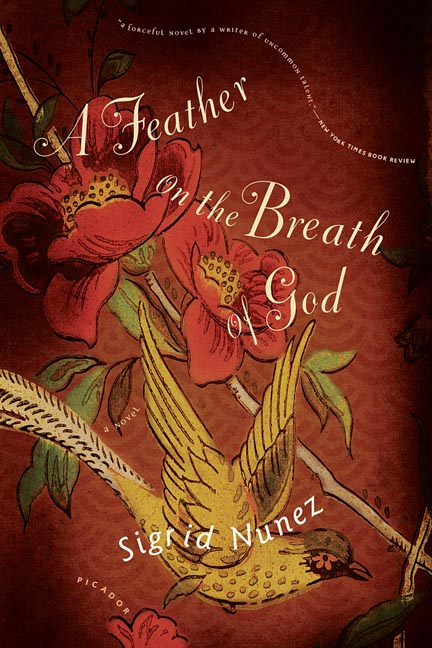A Feather on the Breath of God
Discussion Questions for Reading Groups
 1. In her first novel, A Feather on the Breath of God, Sigrid Nunez used material from the lives of her own parents to create the characters of Chang and Christa, the father and mother of the unnamed narrator. How would you describe the way each of these people is portrayed in the book? Compare the way the narrator sees her parents from the point of view of a child with how she sees them looking back as an adult. What does it mean for her to be telling their stories at this stage in her life?
1. In her first novel, A Feather on the Breath of God, Sigrid Nunez used material from the lives of her own parents to create the characters of Chang and Christa, the father and mother of the unnamed narrator. How would you describe the way each of these people is portrayed in the book? Compare the way the narrator sees her parents from the point of view of a child with how she sees them looking back as an adult. What does it mean for her to be telling their stories at this stage in her life?
2. A Feather on the Breath of God has been called an important contribution to immigrant literature. In what ways do you think it helps readers understand the immigrant experience? Chang, Christa, and Vadim each come to America at a different historical moment and from a different “old country.” Discuss the different fates they find awaiting them in the new country.
3. The style and structure of A Feather on the Breath of God are unconventional. Sigrid Nunez has described the book as belonging to a “hybrid genre,” part fiction, part nonfiction. According to Nunez, writing in this genre was the only way she could have told her story as she thought it should be told. “I wanted to write about things that had actually happened, but I also wanted a certain creative freedom. In fact, there was so much I didn’t know about my parents, especially about their pasts, that I had no choice but to invent. For this reason, I could not publish the book as a memoir.” How does the question of genre become part of the narrative itself? What advantages does the writer gain from telling her story as if it were a straight memoir? Discuss the different ways memory and imagination are brought into play in the four parts of the novel.
4. Most immigrant stories center on the experiences of characters belonging to one particular race or ethnic group. A Feather on the Breath of God, published in 1995, was one of the first American novels to examine issues of identity and displacement in the lives of characters of mixed race and in multicultural families. Compare this novel to other immigrant narratives you have read and discuss what the multicultural element brings to the traditional genre.
5. Nunez’s novel has been described as both disturbing and hopeful. Which aspects of the story do you think readers might find disturbing, and why? If you agree that the book does hold out the promise of hope, where does this hope lie?
6. Why does ballet take on such significance for the narrator when she is an adolescent? What does studying ballet bring to her life that is otherwise missing from it?
7. Some readers have suggested that as a result of her mixed ethnicity and the parental conflicts that dominated her upbringing, the narrator has come to have a serious identity problem. “She literally doesn’t know who she is.” Do you agree with this critic’s statement? If so, how is this shown in the novel?
8. In the chapter “Immigrant Love,” we find the narrator asking herself whether, in the end, Vadim is a good man or a bad man. How is the chapter itself a long answer to that question, and what is your view? What is your own judgment of Vadim, and how do you see the narrator’s analysis of him and his behavior?
9. One critic has used the term “erotic displacement” to describe the narrator’s affair with Vadim. Many readers have seen the affair as purely self-destructive on the narrator’s part. Do you think this is accurate? Are there other sides to this emotional entanglement?
10. Nunez was taken with Jane Austen’s observation that a person does not love a place less because he or she has suffered there. With this observation in mind, discuss the feelings that each of the characters, including the narrator, has about his or her homeland and childhood. Do Austen’s words also ring true for you or for someone you know?
